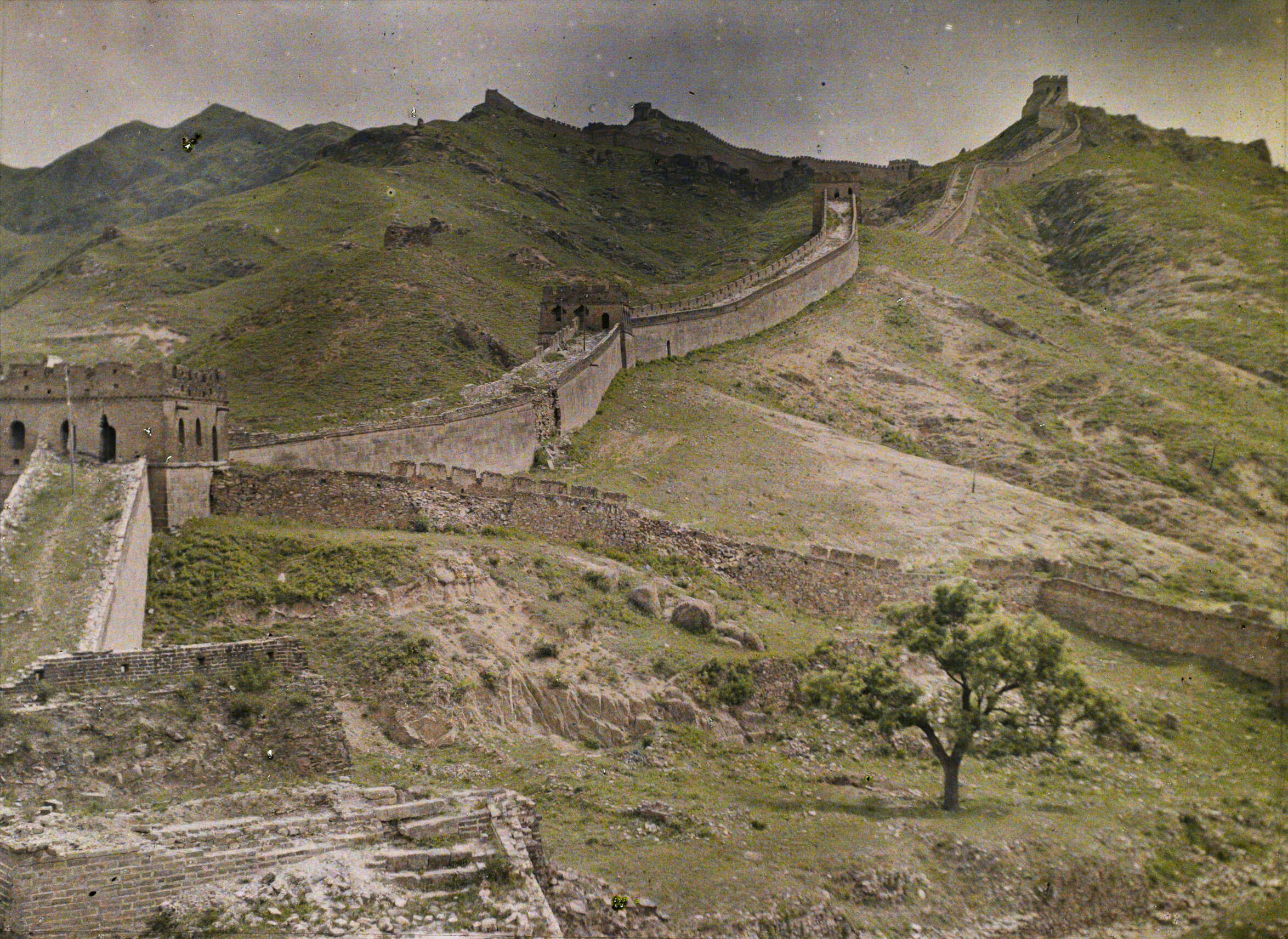Albert Kahn's Archives of the Planet
Autriche Hongrie, Vienne, La boutique du libraire juif : le nom du libraire est : J. M. Belf Rabensteig, 1913 by Auguste Léon
© Archives de la Planète – Musée départemental Albert-Kahn
What shapes our understanding of the past? Photography, for one, mediates what is preserved of our past, it stands as a witness. It controls to some extent what we want to remember and forget. How, then, does Albert Kahn’s choice to collect color photographs impact the way we see and sense our past?
Albert Kahn was a mysterious man. He was discrete but stood alongside powerful, influential people and held philanthropic ideas, special to his person. He was born in 1860 in Alsace (Northeastern France, bordering with Germany and Switzerland) where the Franco-Prussian war broke out ten years later. He experienced Prussia defeating France, and the trauma of his home being annexed and invaded by the Germans. His family, like many families, had to make a choice between France or Germany. He chose France, moved to Paris during his teenage years, and quickly became a successful banker. Unlike other bankers, Albert Kahn had idealistic and utopian visions of how he would use his money. Because of his past experiences and thanks to his education, he was aware and concerned that the disturbed world he lived in was rapidly changing with the Industrial Revolution, new technologies, economies, and markets. The general motivation of making the world more interconnected and the loss of certain ways of living that this implicated troubled him.
France, Paris, La rue de Phalsbourg, 1918 by Auguste Léon
© Archives de la Planète – Musée départemental Albert-Kahn
To preserve the memory of the world as it was; troubled by wars and disappearing under the power of modernity and imperialism, Albert Kahn started an ambitious project he called The Archives of the Planet. He sent photographers and cinematographers around the world for over twenty-two years, between 1909 and 1931. They travelled to about fifty countries, and captured what is still to this day the biggest collection of autochromes in the world. The Autochrome is the first industrial technique for colored photographs, invented by the Lumière brothers in 1907.
France, Ciboure, La rue Pocalette à la sortie de l'Ecole, 1924 by Auguste Léon
© Archives de la Planète – Musée départemental Albert-Kahn
Chine, Badaling, Nankou, La grande muraille, 1912 by Stéphane Passet
© Archives de la Planète – Musée départemental Albert-Kahn
In January 2019, the collection of these 72 000 autochromes from the Albert Kahn museum was made available for everyone, in its entirety, on their website. His project was essentially for the world, for humanity. Albert Kahn’s vision was that through providing a better understanding between people and different cultures, the world could be more at peace. During his life, he witnessed Europe discovering the world and conquering it. He saw imperialism disintegrate cultures and re-map the world as they wanted, defining people, their ways of life and their thoughts. He didn’t want to stand there and witness the world being framed in a single manner. His dream was to draw people closer to each other, to make them reconnect and tie them together again in appreciating their differences. Albert Kahn was a dreamer who, nevertheless, made things happen.
To create a monumental visual record and archive of what societies really looked like, not romanticized or denigrated through a foreign perspective but rather just as they were. He was not seeking to elevate certain people or a certain class, but preferred to prioritize an objective view, looking at people instead of individuals. His photographers captured a mood of everyday life, the trivial and ordinary moments in life. They chose to catch the blind spots of history. Through these buried moments and with the tool of photography, Albert Kahn wanted to display the rapid transitory and fleeting aspect of societies of the time.
Albanie, Shkodër Groupe devant le mur endommagé d'un couvent de Franciscaines, 1913 by Auguste Léon
© Archives de la Planète – Musée départemental Albert-Kahn
Japon, Kyoto, Palais Impérial de Singakuin, 1926 by Roger Dumas
© Archives de la Planète – Musée départemental Albert-Kahn
Before he began this photography project, he bought a property in the Boulogne-Billancourt suburbs of Paris and designed a huge garden in the back of his home. Situated near the famous Botanical Garden of Paris, known for its traditional French style, the garden of Kahn is more eclectic, comprising of landscapes and gardens from various cultures and traditions. Today, his property is a museum which they are currently exending by building a whole new space for his collections and for educational purposes. The new building will be a beautiful, wooden piece of architecture designed by the Japanese architect Kengo Kuma. Following the thread that Albert Kahn had initiated, the department of Boulogne-Billancourt are continuing his project, in a way, by extending it and growing this space for education and essentially promoting the idea of sharing, of challenging our curiosities and spreading awareness of different cultures around the world.
This project seems so relevant and it is not a surprise that Albert Kahn’s wish to promote different cultures was pursued in color. Color makes his project feel close to us and drives us to continue his project.
Afghanistan, Moukor, Un petit commerce, 1928 by Frédéric Gadmer
© Archives de la Planète – Musée départemental Albert-Kahn
Canada, Jasper-Parc, Effet du soir sur le lac vers le Mt Edith Cavell, 1926 by Frédéric Gadmer
© Archives de la Planète – Musée départemental Albert-Kahn















